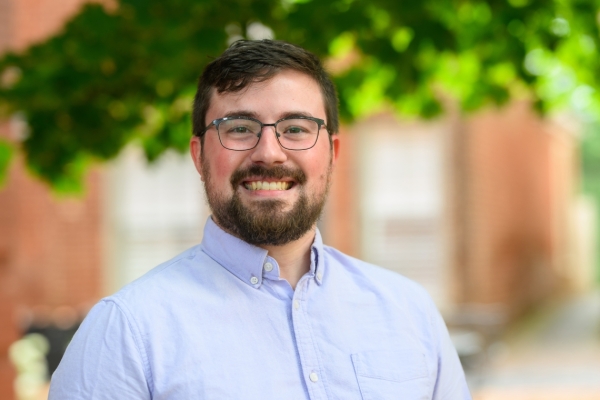
Nicholas Barber Published in the Journal of Volcanology and Geothermal Research First-year earth and environmental science professor co-authored a paper titled “Monogenetic volcanoes as windows into transcrustal mush.”
Nicholas Barber, assistant professor of earth and environmental science at Washington and Lee University, recently co-authored a paper published in the December 2023 edition of the Journal of Volcanology and Geothermal Research.
The article, titled “Monogenetic volcanoes as windows into transcrustal mush: A case study of Slamet and Loyang volcanoes, Central Java,” was the final chapter of Barber’s Ph.D. thesis and the culmination of several years of international collaboration. He co-authored the paper along with Sophie L. Baldwin and Marie Edmonds from the University of Cambridge (U.K.), Felix O. Boschetty from the University of Leeds (U.K.), and Haryo Edi Wibowo and Agung Harijoko from Universitas Gadjah Mada in Indonesia. The article was made possible, in part, due to support from the Class of 1956 Provost’s Faculty Development Endowment at W&L.
Barber’s research involves the Gunung Slamet (Mt. Slamet) stratovolcano in Central Java, Indonesia, as well as its most distal monogenetic scoria cone called Gunung Loyang (Mt. Loyang). In general, volcanoes like Gunung Slamet are known for having a short eruptive lifespan, meaning they erupt for short periods ranging from days to weeks with limited material output. The material in question is usually composed of lava, in the form of “bombs,” or volcanic projectiles. However, recent work by Barber’s collaborators has demonstrated Slamet is capable of much larger explosive eruptions. To determine what drives these different eruption styles, Barber led research to determine what feeds the “magma plumbing system” at both Slamet and neighboring Loyang.
“The seed of this study originated in fall 2019 when I supervised my first student research project,” said Barber. “It feels amazing to see everything from my Ph.D. out in the world! This study came together thanks to the expertise of Pak Agung and Pak Haryo, the hard work of my student Sophie Baldwin, the insights of my colleague Felix Boschetty, and the support and vision of my Ph.D. advisor Marie Edmonds.”
Barber’s study showed evidence for a lateral connection between Gungung Loyang and Gunung Slamet, indicating that they share a magma reservoir at depth. The research demonstrated that magmas in this shared reservoir hold significant quantities of water and carbon dioxide, which are some of the key drivers of explosive eruptions. This provides us with insight into what magma bodies may have driven large eruptions in the distant past.
Barber came to W&L from from McGill University (Canada) where he was a Wares Postdoctoral Research Fellow during the 2022-23 academic year. He holds a Bachelor of Science in geoscience from Drexel University and earned a Ph.D. in Earth sciences from the University of Cambridge (U.K.).
If you know a W&L faculty member who has done great, accolade-worthy things, tell us about them! Nominate them for an accolade.
 Nicholas Barber, assistant professor of earth and environmental geoscience
Nicholas Barber, assistant professor of earth and environmental geoscience

You must be logged in to post a comment.